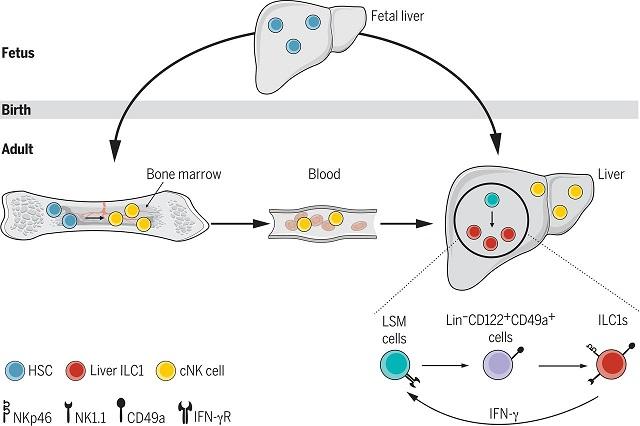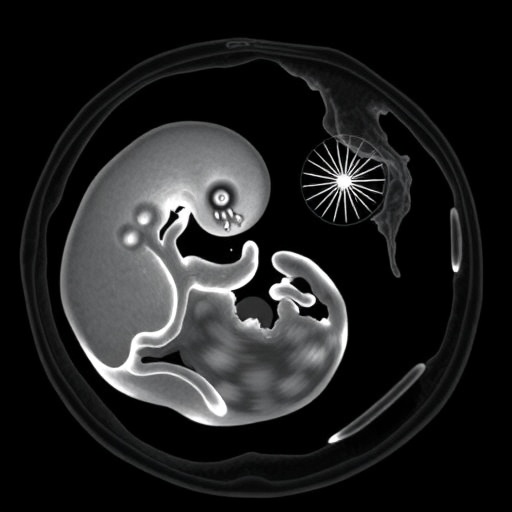
Credit: BAI Lu
Researchers from the University of Science and Technology of China (USTC) of the Chinese Academy of Science (CAS), teamed up with scientists from Aix Marseille University, discovered that hematopoietic progenitors possessed the differentiation potential to type 1 innate lymphoid cells (ILC1s) in adult liver, and dissected the regulation mechanisms of such cell differentiation, revealing the pathways that lead to the development of tissue-resident lymphocytes. This study was published in Science.
Hematopoiesis occurs at different sites following the development of human body. After birth, the bone marrow (BM) has long been known to be the main hematopoietic organ where immune cells develop.
However, a previous study proposed that liver natural killer (NK) cells, retained in the adult liver without circulating through blood out of liver, which distinguished them from conventional NK (cNK) cells. The liver-resident NK cells, also known as liver ILC1s, were then viewed as one of three innate lymphoid cell subsets,.
Expanding studies were subsequently carried out to demonstrate the functional features and differentiation mechanisms of these cells by USTC scientists. Nevertheless, the origin and development of ILC1s remain unclear.
In this study, researchers investigated whether liver-resident ILC1s could develop from local hematopoietic progenitors during adulthood, as BM hematopoiesis was not the major source of them.
By comparing the fetal liver, the adult liver, BM and peripheral blood hematopoietic progenitors, researchers found that adult mouse liver contained Lin?Sca-1+Mac-1+ (LSM) cells, like hematopoietic stem cells (HSCs) in the fetal liver, at significantly higher frequencies. Experiments transferring purified LSM cells from adult liver into sublethally irradiated mice suggested the development potential to multiple hematopoietic lineages, and preferential differentiation into ILC1s in recipient liver through action on local progenitors, of LSM cells.
Moreover, this study revealed the role of interferon-γ (IFN-γ) playing in regulating ILC1s development. The IFN-γ produced by mature liver ILC1s promoted their own development by giving rise to liver LSM cells, while the absence of IFN-γ signaling had a negative effect on expansion of ILC1s rather than cNK cells.
These findings provide evidence for local development of adult liver ILC1s differentiated from fetal liver-derived hematopoietic progenitors, which is positively regulated by self-produced IFN-γ. This study unveils the pathways leading to extramedullary development of innate lymphoid cells, offering explanations of a distinctive regional immune feature within the liver.
###
Media Contact
Jane FAN Qiong
[email protected]
Related Journal Article
http://dx.




